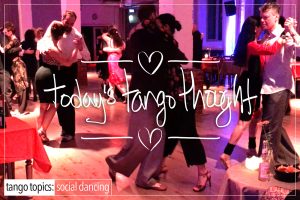A good portion of people come into the embrace, Lead or Follow, and in one way, shape, or form, contort their bodies to make the dance work while dancing, rather than employ proper technique.
Contort ? Yes. For example: As a Lead or Follow they might dance with a ‘head tilt‘ towards (buried into) or away from their partner, or as a Lead they’ll employ ‘waiter arm and hand‘, or as a Follower they’ll dance in their Lead’s armpit, twisting their body to the side, and un-leveling their shoulders. This is contortion.
You would think that these dancers can feel the contortions.
No. They can’t.
To them the contortion is normal, this is how they view the dance.
Correcting contortion is not easy for one simple reason: Their bodies, their nervous system, their muscles are used to the contortion! And because they’re used to the contortion, doing anything else aside from what they usually do is painful to them. Muscles, nerves, tendons that they have strengthened to do X, Y, and Z (the contortion), is now being asked to do A, B, and C, and it’s painful to them, even for a minute. The A, B, and C in this case is better tango posture, desirable head position, relaxed arm and hand positions that do not employ tension, resistance, and/or force.
Correcting that contortion and bodily awareness takes time, patience, and lots of reminders.
Those reminders, by the way, are constant, even after a minute of hearing it, and doing it, while being reminded of X, Y, and Z, they’ll go back to X, Y, and Z! Why ? Because it’s comfortable for them. It takes a lot of time and reminders to unlearn what they have learned. And for a while the dance will be uncomfortable. That discomfort is an absolute requirement to learning and employing better tango technique.











